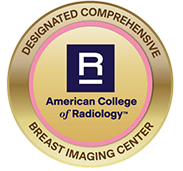Bone Density Exams
Source: http://www.nof.org/ and http://www.acr.org/
Dual-energy x-ray absorptiometry (DXA), also known as bone densitometry, is the only test that can diagnose osteoporosis before a broken bone occurs. Bone Density Scanning/DXA is the established standard used to measure bone loss. Bone Density Exams are a non-invasive test, performed using a small dose of x-rays. National Osteoporosis Foundation recommends a bone density test of the hip and spine by a central DXA machine to diagnose osteoporosis. Central DXA devices such as ours measure bone density in the hip and spine.
Osteoporosis involves a gradual loss of calcium, as well as structural changes, causing the bones to become thinner, more fragile and more likely to break. Women, after menopause, are most likely affected by osteoporosis although osteoporosis may be found in men as well.
Bone density is also used to track the effects of treatment for osteoporosis and other conditions that cause bone loss. The Bone Density Exam can also assess an individual’s risk for developing fractures.
To better understand your risk of osteoporosis the following factors are assessed:
- Age
- Gender
- Whether you have reached menopause (women)
- Personal history of broken bones as an adult
- Family history of broken bones and osteoporosis
- Alcohol and tobacco use
- Dietary habits, including how much calcium and vitamin D you get
- Exercise and physical activity habits
- Eating disorder history
- Whether you have had regular periods (premenopausal women)
- Testosterone levels (men)
- Medications
Osteoporosis is treatable
We have learned that Osteoporosis is treatable. There are many steps you can take to manage the disease and reduce your chance of breaking a bone. It is important to work with your doctor to learn about your risk for osteoporosis and broken bones.
For more information on Bone Density Exams, please visit:
New York State Osteoporosis Resource Center- http://www.nysopep.org/

